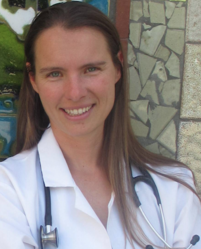Photo by Terabass/CC-SA-3.0
It was around 2010 that Dr. Angela Bymaster was seeing a disturbing pattern in the histories of her adult patients. She already knew that patients who saw her at the Valley Homeless Health Care Program in San Jose, CA, where she worked at the time, were homeless or recently homeless. What was most troubling to Bymaster was knowing that their current precarious existence could have been prevented.

“Over and over and over again I was hearing the same stories of abuse in childhood and neglect, incarceration, moving around a lot, a lot of trauma for them as children,” said Bymaster, who as a family physician always took her adult patients’ in depth pediatric histories. She now works for the Washington Neighborhood Health Clinic, a school health clinic in San Jose that’s part of a non-profit School Health Clinics of Santa Clara County.
It was in 2007 that Bymaster became aware of the landmark CDC/Kaiser Permanente Adverse Childhood Experiences Study that showed the link between 10 types of childhood trauma with health outcomes in adulthood.
“Immediately when I heard about [the study], it just really struck a chord with me, because it agreed with so much that I had seen – with illness being more severe in people who had significant stresses as children,” she said. “It just connected a lot of dots for me. I was really struck by how severe and frequent I would hear those stories from my homeless patients.”
It was the consistency of hearing stories about her patients’ ACEs that compelled Bymaster to document what her patients experienced as children. Her study, recently published in the Journal of Health Care for the Poor and Underserved, she explained, adds to the growing body of research on ACEs and health outcomes.
To capture data related to her patients’ adverse childhood experiences, Bymaster and her fellow researchers asked 125 patients from the Valley Homeless Health Care Program to respond to the original 10-question ACE survey. In addition, the study included questions about traumatic brain injury (TBI), learning disabilities, post-traumatic stress disorder, and whether their main caregiver had ever changed — all of which, she explained, appeared to be common among her patients.
TBIs in particular really stood out. In Bymaster’s conversations with patients she said she repeatedly heard unusually dramatic stories of head injuries experienced in childhood. “I literally had a patient who said, ‘My dad hit me in the head with a baseball bat when I was 15, because I made him mad.’” Noting that there was a dearth of research at the time looking at the association between homelessness and TBIs, she thought the question was important to include.
The results of the study confirmed Bymaster’s assumptions, she said. More than 66 percent of the study participants had ACE scores of 5 or more compared to 8.7 percent of 29,000 people in five states, a study modeled after the original ACE Study in 2009 by the Centers for Disease Control and Prevention.
Compared to the general population, Bymaster and her colleagues found that the homeless patients they surveyed were 10 times more likely to have experienced the following ACEs: a family member going to prison, living with someone who was using street drugs, and living with an adult who “often or very often pushed, shoved, grabbed or slapped them.” They were 6.5 times more likely than the general population to have a household member attempt suicide. Some 40 percent lived with a caregiver who wasn’t a biological parent, such as a grandparent or other relative, in foster care, or in group homes. Thirty-seven percent had experienced homelessness as children, according to the study.
And Bymaster’s suspicions about the prevalence of traumatic brain injuries in the homeless population she served was borne out by their findings. Seventy-six percent of the 125 patients queried reported experiencing at least one TBI. More than a third experienced a TBI in childhood. Mental Illness was also common, with 80 percent of the participants disclosing they had been diagnosed with mental illness.
Another standout result for Bymaster was the prevalence of learning disabilities. Compared to five percent of the general population, “40 percent of my homeless patients said they had been diagnosed with a learning disability or had been in special ed, which was huge,” said Bymaster. “We know that ACEs and learning disabilities can go hand in hand,” she said. “Sometimes we know that a child with learning disabilities can be more challenging to parents. And parents in those situations might not know what to do.” In terms of prevention, Bymaster said that helping a parent navigate those challenges can help reduce adversity among their children.
The stark irony of the homeless contrasted with the well-off in Santa Clara County was not lost to her. “In the heart of Silicon Valley, Santa Clara County has the distinction of having the highest median income and the highest rate of people who are unsheltered and homeless in the nation,” she wrote in the study’s summary.
Bymaster and her colleagues recognize the limitations of the study. It was a small sample of 125 patients. That many had experienced traumatic brain injuries, they note, may affect how well they recall incidents from their childhoods.
The one conclusion that she and her colleagues believe is indisputable is that their study supports previous research indicating that the majority of the homeless population experienced severe trauma as children. The next step, they write, is a call for leaders to put resources into prevention to prevent another generation of vulnerable children from becoming homeless adults.


Comments (2)